Beryl
Beryl is a mineral composed of beryllium aluminium cyclosilicate, with the chemical formula Be3Al2(Si6O18). It belongs to the cyclosilicate mineral group, which is characterized by its unique arrangement of silicate tetrahedrons forming rings. Beryl is widely known for its stunning range of colors and its use as a gemstone in various forms, each with its own name based on its color. Some of the most famous varieties of beryl include emerald (green), aquamarine (blue-green), morganite (pink), and heliodor (yellow).
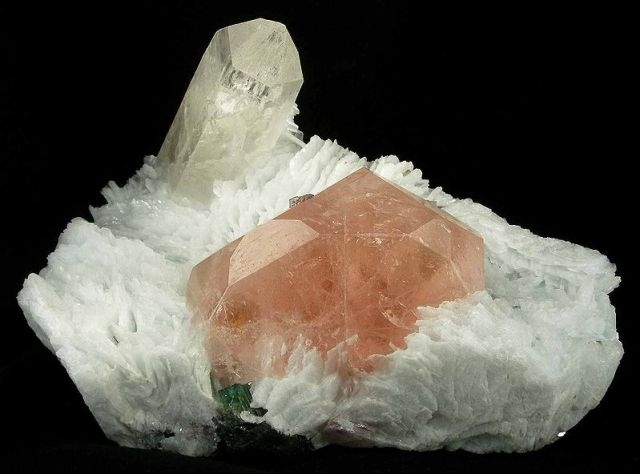
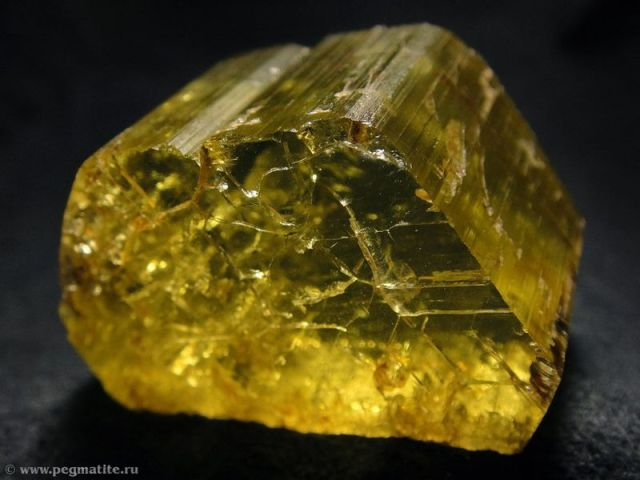
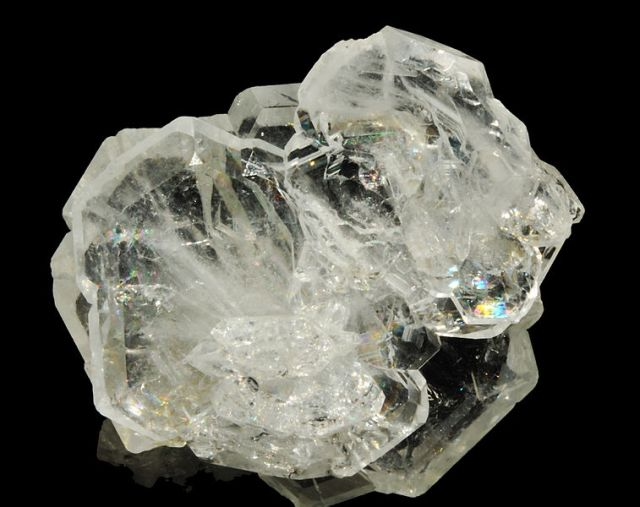
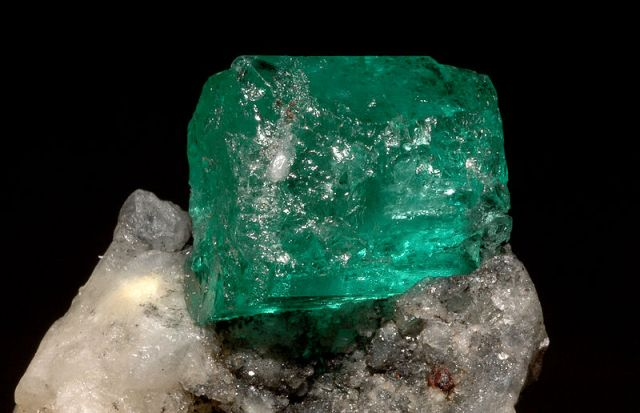
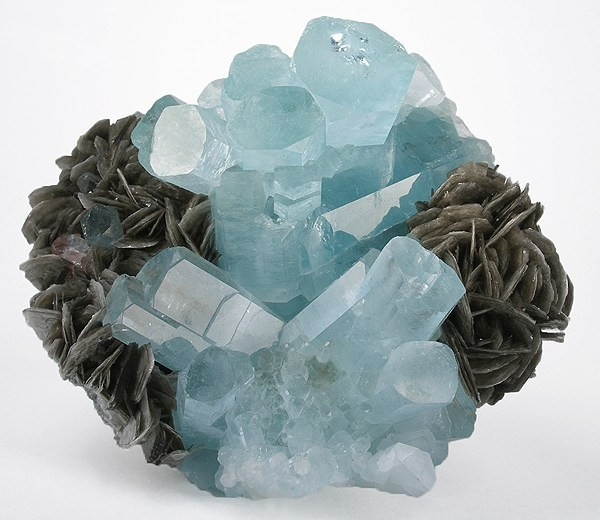
Morganite with Quartz on Cleavelandite
crystals of beryl var. goshenite
emerald
golden berly
Nagar (Nagir), Hunza Valley, Gilgit District, Northern Areas, Pakistan
Red Beryl, Wah Wah Mts, Beaver County, Utah, USA
Name: The name beryl is of ancient origin, derived from the Greek word which was applied to green gem stones.
Association: Quartz, feldspar, muscovite, lepidolite, spodumene, amblygonite, tourmaline, topaz, cassiterite, columbite, tantalite.
Beryl Composition: Beryllium aluminum silicate, Be3Al2Si60i8. BeO = 14.0 per cent, A120 3 = 19.0 per cent, Si02 = 67.0 per cent. Small amounts of the alkali oxides, often in part consisting of cesium oxide, frequently replace the beryllium oxide
Diagnostic Features: Recognized usually by its hexagonal crystal , form and color. Distinguished from apatite by greater hardness.
Similar Species: Euclase, Be2Al2(Si04)2(OH)2, and gadoliniie, Ye,Fe” Be2(Si04)202, are rare beryllium silicates.
Crystal Structure: Beryl has a hexagonal crystal structure, meaning it has six-fold rotational symmetry around its vertical axis. This crystal structure forms prismatic, elongated hexagonal crystals with a well-defined basal cleavage. The basic building blocks of beryl’s crystal structure are chains of interconnected silicate tetrahedra, which are arranged in rings. The chains run parallel to the crystal’s c-axis and are linked together by metal cations (beryllium and aluminium) and other atoms in various coordination states. This unique arrangement gives beryl its distinctive physical and optical properties.
Physical Properties: Beryl exhibits a range of physical properties that contribute to its value and popularity as both a gemstone and an industrial mineral:
- Color: As mentioned earlier, beryl occurs in a variety of colors, each corresponding to a different variety. For example, emerald is green due to the presence of trace amounts of chromium or vanadium, while aquamarine is blue-green due to iron impurities.
- Hardness: Beryl has a hardness of 7.5 to 8 on the Mohs scale, making it relatively durable and suitable for jewelry use. However, its hardness can vary slightly depending on the specific variety.
- Luster: Beryl displays a vitreous (glassy) luster when cut and polished. This contributes to its gem-like appearance.
- Transparency: Beryl is often transparent to translucent, allowing light to pass through and exhibit its internal features.
- Refractive Index: Beryl’s refractive index varies depending on the specific variety and its composition. This property affects the way light is bent as it enters and exits the gemstone, influencing its brilliance and sparkle.
- Cleavage: Beryl has distinct basal cleavage, which means it can break along flat surfaces parallel to its basal plane.
- Density: The density of beryl varies depending on its composition and impurities, but it typically falls within the range of 2.63 to 2.90 g/cm³.
- Optical Phenomena: Some varieties of beryl, like cat’s eye and asteriated beryl, can exhibit optical phenomena such as chatoyancy (cat’s eye effect) and asterism (star effect), adding to their visual appeal.
In addition to its use as gemstones, beryl has industrial applications due to its resistance to chemicals, high melting point, and electrical conductivity. It is used in electronics, aerospace, and defense industries for various purposes.
In summary, beryl is a cyclosilicate mineral with a hexagonal crystal structure and a variety of captivating colors. Its unique physical properties have made it a sought-after gemstone and a valuable material in various industries.
Contents
- Types and Varieties of Beryl
- Gemstone Properties and Uses
- Beryl’s Industrial Applications:
- Formation of Beryl and Geological Conditions
- Common Locations for Beryl
- Beryl Synthetics and Treatments
- Famous Beryl Gemstones
- Distribution
Types and Varieties of Beryl

Beryl is a versatile mineral that comes in several varieties, each known for its distinct color and unique characteristics. Here are some of the most well-known beryl varieties based on color:
- Emerald:
- Color: Emerald is renowned for its deep green color, which is caused by trace amounts of chromium and/or vanadium in the crystal structure.
- Distinctive Features: Emeralds often exhibit a rich green hue that is highly prized in the world of gemstones. Their color can range from bluish-green to yellowish-green. Inclusions are common in emeralds and are sometimes referred to as “jardin” (French for garden), adding to their character.
- Aquamarine:
- Color: Aquamarine is characterized by its pale blue to blue-green color, reminiscent of the clear waters of the sea.
- Distinctive Features: The light blue or cyan hue of aquamarine is highly desirable. Some aquamarines may display a bluish-green color, and they often have a transparent appearance. Like other beryl varieties, they can contain inclusions, but these are usually less pronounced than those in emeralds.
- Morganite:
- Color: Morganite is known for its delicate pink to peachy-pink color, caused by traces of manganese.
- Distinctive Features: Morganite’s soft pastel hues make it a popular choice in jewelry. Its color range can vary from light pink to deeper peach tones. The clarity and transparency of morganite are valued, and the gemstone is often cut into elegant and stylish faceted shapes.
- Heliodor:
- Color: Heliodor comes in shades of yellow to yellow-green.
- Distinctive Features: The name “heliodor” is derived from the Greek words for “sun” and “gift,” referencing its sun-like color. The gemstone can range from pale yellow to vibrant yellow-green. Heliodor’s bright color and relatively good clarity make it a striking choice for jewelry.
- Goshenite:
- Color: Goshenite is the colorless variety of beryl, often used as a base for various treatments and as a diamond substitute.
- Distinctive Features: Goshenite’s lack of color allows it to showcase the brilliance and sparkle of the gem’s natural transparency. It’s sometimes used as a less expensive alternative to diamonds and as a neutral backdrop for other colored gemstones.
- Red Beryl (Bixbite):
- Color: Red beryl is one of the rarest and most valuable beryl varieties, displaying vivid shades of red due to traces of manganese.
- Distinctive Features: Red beryl’s intense red color and scarcity make it highly sought after by collectors and gem enthusiasts. It’s considered one of the rarest gemstones in the world.
These are just a few of the many beryl varieties that exist, each prized for its distinct color and qualities. The diversity of beryl’s colors and properties has contributed to its enduring popularity in both the world of gemology and the jewelry industry.
Gemstone Properties and Uses

Beryl as a Gemstone: Historical Significance and Cultural Relevance:
Beryl has a long history as a prized gemstone and holds cultural significance in various civilizations. In ancient times, beryl was considered a symbol of purity and protection. The green variety, emerald, was particularly revered by the Egyptians for its lush color, often associated with fertility and rebirth. Ancient Greeks also highly valued emeralds and believed they could provide foresight and enhance the ability to predict the future.
Factors Influencing Beryl’s Value as a Gem:
Several factors contribute to the value of beryl as a gemstone:
- Color: The color of the beryl variety greatly influences its value. The most vibrant and saturated colors are often the most prized. For example, emeralds with a deep, intense green color and aquamarines with a clear, blue hue are highly sought after.
- Clarity: Clarity refers to the presence of internal inclusions or external blemishes within the gem. Beryl gemstones with fewer visible inclusions are considered more valuable. However, some inclusions, like those in emeralds, are accepted as part of the gem’s character if they don’t significantly affect transparency.
- Size: Larger beryl gemstones are rarer and command higher prices, especially in high-quality colors and clarity. The scarcity of large, top-quality beryl gems contributes to their value.
- Cut: The way a beryl gemstone is cut and faceted significantly impacts its appearance and value. Skilled cutting enhances the gem’s brilliance, sparkle, and color display. The cut should also be appropriate for the gem’s color and optical properties.
Popular Uses in Jewelry and Ornamental Pieces:

Beryl, in its various colorful forms, is highly prized in the world of jewelry and ornamental design:
- Rings: Beryl gemstones are often set as centerpieces in rings, particularly in engagement rings and cocktail rings. The durability and wide range of colors make them versatile choices.
- Necklaces and Pendants: Beryl gemstones are set into necklaces and pendants to add a splash of color and elegance. Emeralds and aquamarines are frequently used in these pieces due to their popularity and timeless appeal.
- Earrings: Beryl gems are set in earrings, either as studs, drops, or chandelier-style designs. The gems’ transparency and luster make them attractive choices for enhancing a person’s facial features.
- Bracelets and Brooches: Beryl gemstones can also be found in bracelets and brooches, adding a touch of sophistication and color to formal and casual attire alike.
- Ornamental Pieces: Beyond jewelry, beryl is used in ornamental pieces such as carvings, sculptures, and decorative objects. These pieces showcase the gemstone’s beauty and can be highly collectible.
In summary, beryl has a rich historical and cultural significance as a gemstone. Its value is influenced by factors such as color, clarity, size, and cut. Beryl gemstones are widely used in jewelry and ornamental pieces, offering a broad spectrum of colors and options for expressing personal style and enhancing aesthetics.
Beryl’s Industrial Applications:
Beryl’s unique properties, particularly its content of the element beryllium, make it valuable in several industrial sectors:
- Electronics and Telecommunications: Beryl’s excellent thermal conductivity, low dielectric constant, and stability in high-frequency environments make it suitable for applications in electronics and telecommunications. It is used in microwave components, transistors, and integrated circuits.
- Aerospace and Defense: Beryl’s combination of lightweight and high strength makes it desirable for aerospace and defense applications. It is used in manufacturing lightweight structural components, such as satellite mirrors and components for military aircraft.
- Nuclear Industry: Beryl is used in certain nuclear reactor designs due to its low absorption cross-section for thermal neutrons. This property makes it useful in nuclear power generation and research reactors.
- Medical Industry: Beryllium is used in the medical industry for X-ray windows and various medical imaging equipment due to its transparency to X-rays and gamma rays.
- Automotive and Transportation: Beryl’s strength-to-weight ratio is advantageous in applications where weight reduction is critical. It can be used in lightweight components for vehicles and transportation systems.
Extracting Beryllium from Beryl:
Beryllium is a valuable element in industrial applications due to its desirable properties, including its low density, high melting point, excellent thermal conductivity, and exceptional strength-to-weight ratio. Beryllium is often used as an alloying element to improve the properties of other metals.
Beryllium extraction from beryl involves several steps:
- Mining and Crushing: Beryl-bearing ores are mined, and the beryl crystals are extracted. The ore is then crushed into smaller particles to facilitate further processing.
- Concentration: The crushed ore is subjected to concentration methods, often involving physical separation techniques such as gravity separation or flotation. This step is necessary to increase the beryllium content in the ore.
- Chemical Processing: The concentrated ore undergoes chemical processing to extract beryllium compounds. One common method is the alkaline dissolution process, where the ore is treated with sodium hydroxide to form soluble beryllium hydroxide.
- Purification and Conversion: The beryllium hydroxide solution is purified to remove impurities. It is then converted into beryllium fluoride through chemical reactions.
- Electrolysis: Beryllium fluoride is then subjected to electrolysis, where beryllium metal is deposited at the cathode. This process allows for the extraction of pure beryllium.
- Alloy Production: Beryllium is often alloyed with other metals, such as copper, to create beryllium-copper alloys. These alloys have exceptional electrical and thermal conductivity, making them valuable in various industries.
It’s important to note that beryllium extraction and processing require careful handling and environmental considerations due to the toxic nature of beryllium compounds. Strict safety measures are taken to protect workers and the environment during these processes.
Formation of Beryl and Geological Conditions

Beryl forms in pegmatites and hydrothermal veins, which are specific geological environments that provide the necessary conditions for its crystallization. Pegmatites are coarse-grained igneous rocks with exceptionally large crystals, and hydrothermal veins are mineral deposits formed from hot, mineral-rich fluids that migrate through fractures in the Earth’s crust. The formation of beryl requires specific elements, temperatures, and pressures:
- Source of Elements: Beryl forms primarily from the elements beryllium, aluminum, and silicon. These elements need to be present in the geological environment in sufficient quantities.
- High-Pressure Conditions: Beryl formation occurs at relatively high pressures within the Earth’s crust. This is typically deeper within the crust where hydrothermal fluids interact with existing minerals.
- Hydrothermal Fluids: In hydrothermal systems, hot fluids rich in mineral components migrate through fractures in the rocks. These fluids are often enriched in beryllium, aluminum, and silicon, providing the necessary elements for beryl formation.
- Temperature Gradient: The temperature gradient between the hot hydrothermal fluids and the surrounding rock allows for the precipitation and crystallization of minerals like beryl.
- Time: Beryl formation is a slow process that occurs over long periods of time, as the hydrothermal fluids interact with the surrounding rocks and minerals.
Common Locations for Beryl

Beryl is found in various parts of the world, often associated with granite pegmatites and hydrothermal deposits. Some of the notable locations for beryl mining and occurrence include:
- Emerald Deposits: High-quality emeralds are found in countries like Colombia, Zambia, Brazil, and Afghanistan. Colombia, in particular, is famous for its lush green emeralds.
- Aquamarine Deposits: Aquamarine can be found in Brazil, Madagascar, Nigeria, and the United States (such as in Colorado and California).
- Morganite Deposits: Morganite is commonly found in Brazil, Madagascar, Afghanistan, and certain parts of the United States.
- Heliodor Deposits: Heliodor can be found in Brazil, Russia, Namibia, and parts of North America.
- Goshenite Deposits: Goshenite, the colorless variety of beryl, is found in various locations, often alongside other beryl varieties.
- Red Beryl (Bixbite) Deposits: Red beryl, one of the rarest beryl varieties, is primarily found in the Wah Wah Mountains of Utah, USA.
- Other Varieties: Other beryl varieties like yellow beryl and greenish-yellow beryl can also be found in various locations around the world.
These deposits are often associated with specific geological formations and mineral-rich environments that are conducive to the formation of beryl crystals. The demand for beryl as gemstones and for industrial purposes has led to exploration and mining in these regions.
Beryl Synthetics and Treatments
Synthetic Beryl: Differences from Natural Beryl:
Synthetic beryl, also known as lab-grown or man-made beryl, is produced in a controlled laboratory environment through various methods, including hydrothermal synthesis and flux methods. These synthetic crystals share the same chemical composition and crystal structure as natural beryl, but there are several key differences between synthetic and natural beryl:
- Origin: Synthetic beryl is created in a laboratory, whereas natural beryl forms through geological processes in the Earth’s crust over millions of years.
- Inclusions: Natural beryl often contains inclusions, which are mineral or fluid inclusions trapped during its formation. In contrast, synthetic beryl is typically more inclusion-free due to the controlled conditions of its growth.
- Color: Some synthetic beryl can exhibit color that is too perfect or uniform, lacking the natural variations and nuances seen in many natural beryl specimens.
- Growth Patterns: Natural beryl can display growth patterns and characteristics specific to its geological origin. Synthetic beryl may lack these natural growth features.
- Price: Synthetic beryl is generally less expensive than natural beryl, especially for high-quality specimens, due to the difference in rarity and origin.
Common Treatments and Enhancements:
Gemstones, including beryl, often undergo treatments and enhancements to improve their appearance or marketability. Some common treatments and enhancements applied to beryl and other gemstones include:
- Heat Treatment: Heat treatment is a common method used to enhance the color of beryl. For example, heat can lighten the color of blue aquamarine or improve the color of yellow beryl.
- Irradiation: Irradiation is used to alter the color of some beryl varieties. For example, yellow beryl can be irradiated to achieve a greenish hue resembling emerald.
- Oil or Resin Impregnation: In the case of emeralds, natural fractures and inclusions are sometimes filled with oils or resins to improve clarity and enhance color. This practice has been used for centuries to improve the appearance of emeralds.
- Surface Coating: Surface coatings or films can be applied to beryl gemstones to enhance color temporarily. However, such coatings are generally not durable and can be easily damaged.
- Clarity Enhancement: Some treatments involve filling surface-reaching fractures or cavities with optically transparent materials to improve the gem’s clarity and appearance.
It’s important to note that treatments and enhancements should be disclosed when selling gemstones, as they can significantly affect a gem’s value, durability, and long-term appearance. The gemstone industry follows ethical practices by providing full disclosure of any treatments or enhancements applied to gemstones. Consumers should always inquire about the treatment status of a gemstone before making a purchase to ensure they are making an informed decision.
Famous Beryl Gemstones

Hooker Emerald
Beryl gemstones, with their captivating colors and unique properties, have been cherished throughout history. Here are some famous beryl gemstones that have left their mark:
- Patricia Emerald: This stunning emerald is one of the largest and most famous emeralds in the world. Named after its owner, Patricia, the gem weighs approximately 632 carats and is prized for its rich green color and impressive size.
- Hooker Emerald: Weighing around 75.47 carats, the Hooker Emerald is a well-known Colombian emerald. It was named after its owner, Tiffany & Co. Vice President Tiffany & Co., who donated the gem to the Smithsonian Institution.
- Mogul Emerald: This historic emerald is a 217.80-carat gem that originated in Colombia and was later acquired by a Mughal ruler. The gem is inscribed with Islamic prayers and calligraphy and has a storied past.
- Hirsch Aquamarine: Weighing 109.92 carats, the Hirsch Aquamarine is a notable aquamarine gemstone known for its intense blue color. It was named after Richard T. Hirsch, a gem enthusiast and philanthropist.
- Red Beryl from the Ruby Violet Mine: Red beryl, also known as bixbite, is one of the rarest and most valuable gemstones. The Ruby Violet Mine in Utah, USA, has produced some of the finest red beryl specimens, which are highly sought after by collectors.
- Maxixe Aquamarine: The Maxixe aquamarine is a rare type of aquamarine that displays a deep blue color. Unlike traditional aquamarines, the Maxixe aquamarine’s color can fade upon exposure to light, distinguishing it from its counterparts.
Stories and Legends:
- Curse of the Hope Emerald: The Hope Emerald, a legendary 45.52-carat emerald, is said to be cursed due to its tumultuous history. It was allegedly stolen from a temple in India and went through various owners before finding its way into the hands of an ill-fated adventurer, Lord Francis Hope.
- The Empress Josephine’s Emerald Tiara: The Empress Josephine, wife of Napoleon Bonaparte, owned an exquisite emerald and diamond tiara. This historic piece of jewelry showcases the allure of emeralds during the 19th century.
- The Eye of Brahma: The Eye of Brahma is a legendary emerald that was reportedly stolen from a Hindu temple in India. According to folklore, this gem’s theft led to a curse, bringing misfortune to anyone who possessed it.
- The Legend of the Aquamarine: In ancient lore, aquamarines were believed to be the treasure of mermaids, and sailors often carried them as talismans to ensure safe voyages and protection against sea monsters.
- The Chalk Emerald: This impressive 37.82-carat emerald was once part of the collection of socialite and jewelry enthusiast Bunny Mellon. It’s said to have been found in Colombia in the 19th century and later became part of notable gem collections.
These stories and legends highlight the allure, intrigue, and mystique associated with beryl gemstones throughout history. Beryl’s captivating colors and cultural significance have led to a rich tapestry of tales that continue to captivate our imagination.
Distribution
Beryl is found in various parts of the world, often in specific geological environments that provide the necessary conditions for its formation. Some of the notable locations where beryl is commonly found include:
- Colombia: Colombia is famous for producing some of the finest emeralds in the world. The Muzo and Chivor mines are particularly renowned for their lush green emeralds.
- Brazil: Brazil is a major source of various beryl varieties, including emerald, aquamarine, morganite, and heliodor. The Minas Gerais region is known for producing high-quality beryl gemstones.
- Zambia: Zambia is known for its vivid green emeralds, often characterized by their unique bluish undertones. The Kagem mine is a notable source of these emeralds.
- Madagascar: Madagascar produces a wide range of beryl varieties, including aquamarine, morganite, and heliodor. The island is known for its vibrant gemstone deposits.
- Nigeria: Nigeria is a significant producer of aquamarine, with deposits found in various regions of the country.
- Afghanistan: Afghanistan is known for its high-quality emeralds and morganites. The Panjshir Valley is a notable source of emeralds.
- Russia: The Ural Mountains in Russia have been a historical source of beryl gemstones, including aquamarine and heliodor.
- United States: The United States has beryl deposits in various states. The Wah Wah Mountains in Utah are known for producing rare red beryl, while states like North Carolina, Colorado, and California have yielded aquamarine and other beryl varieties.
- Namibia: Namibia is known for its production of high-quality aquamarine and heliodor, often found in pegmatites.
- Pakistan: Pakistan is another source of fine emeralds, often found in the Swat Valley region.
- Mozambique: Mozambique has become a significant producer of various colored gemstones, including aquamarine and tourmaline.
- Tanzania: Tanzania is known for its aquamarine and other colored gemstones, including tanzanite.
These are just a few of the many locations around the world where beryl is found. Each region’s deposits may vary in terms of quality, color, and availability. Beryl’s wide distribution highlights its global significance in both the gemstone and industrial sectors.
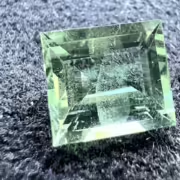
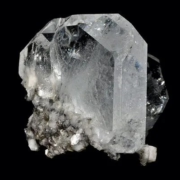


Leave a Reply
Want to join the discussion?Feel free to contribute!